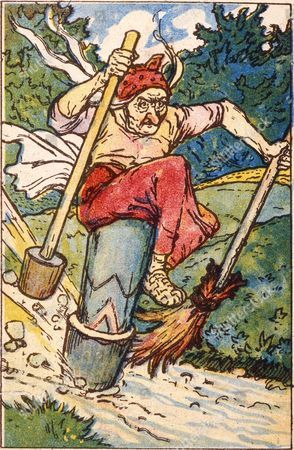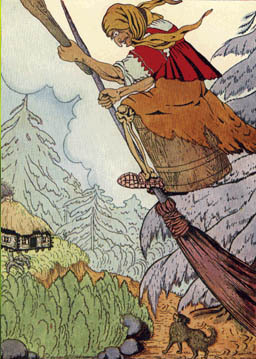What The Pendulum Means
What The Pendulum Means
I do my pendulum readings very simply. They can mean different things from different people, but I will tell you the basic rule of thumb.
1. Pendulums swing clockwise or counterclockwise whenever one asks a yes or no question. Clockwise is yes, and counter clockwise is no.
2. Sometimes the pendulum will swing in an exaggerated circle, meaning whatever it is you are asking means “strong yes” or “strong no”.
3. The latter is exactly what you would think; Meaning your pendulum is barely moving in a circle, this being a weak yes or a weak no.
4. Yes means yes, of course, and no means no.
5. But what does “neutral” mean? Neutral, to me, means you are not supposed to know. There is no spiritual energy or force around to swing the pendulum. The pendulum either does not move, or it swings in a straight line.
Do not take my readings as the pinnacle of absolute truth. I am just a humble witch with a crystal on a chain!

More Posts from Star-comet-witches and Others
18- Baba Yaga

18- Baba Yaga (Slavic Folklore).
This classic witch originates from Russian mythology and Slavic fairytales. Baba Yaga appears in various legends, often occupying the role of the witch residing deep in the woods that the main character must interact and barter with. She is the predecessor to witches like those found in the fairy tales of Charles Perrault, as well as those found in the Grimm Brothers’ works. Baba Yaga retains many unique characterizations and attributes not found in any other witch, however, making her singularly iconic.
Baba Yaga is described as a hideous, deformed, and vicious looking woman, resembling the classic hag archetype. In some versions of her story, Baba Yaga is not one, but three sisters all named Baba Yaga, each sister being older than the next. In this way, Baba Yaga is intimately connected to both The Graeae and the Moirai (#64), and illustrates the triple goddess. More specifically, Baba Yaga is a representation of the Crone phase, and is associated with death, darkness, and winter. Her function in the legends she appears in further matches this archetype, as she “may help or hinder” the characters that beseech her. She stands at the crossroads of death and mystery, allowing some to pass unscathed.
Baba Yaga is best known for two specific attributes that have defined witch iconography and contributed to Baba Yaga’s mythological uniqueness. Her residence, as well as her choice of aerial transportation, are some of the most distinctive out of any witch in this series. While most fairy tale and fictional witches fly through the sky on their iconic brooms, Baba Yaga sits her little old body inside a mortar, and steers her “spice-craft” with a pestle as rudder. The iconography and symbolic nature of this, with the mortar representing the divine feminine/womb and the pestle representing the divine masculine/phallus, shows Baba Yaga to be a character in balance with nature, called by some as a “phallic mother”. Other depictions show Baba Yaga riding through the sky in a cauldron, further solidifying the relationships between witches and their love of these cast iron pots (Ceridwen #56).
Baba Yaga’s hut is similarly iconic and unique, and has influenced centuries of witch-lore. Her house sits upon a pair of chicken legs (sometimes just a single claw). It jumps in the air and spins around, constantly moving from place to place and turning direction. I’ve seen dozens of references and depictions of witch-homes on chicken legs, but they are all imitations of Baba Yaga’s. Her yard is surrounded by a fence impaled with skulls, furthering her placement at the gates of death and dying. Her fowl-legged home appears in the earliest references to Baba Yaga, so whatever this strange attribute means, its intimately connected to her being.
The etymological roots and significance of her name are disputed. It’s generally agreed that the Baba is the same root as babushka, meaning grandmother. Other roots in Old Russian bring the shared meaning of Baba to “midwife, sorceress, and fortune teller”. The Yaga part of her name is less conclusive, however, with no root universally agreed upon. Some believe it has its origin in “serpent, snake”, while others see it from anything from “horror”, “witch”, “evil woman”, and “pain and worry”. In this way, Baba Yaga principally means Grandmother Witch, the Slavic etymological counterpart to the Italian version, Strega Nona (#21). Both Strega Nona and Baba Yaga are examples of the tradition of witch names ending in an A, with Baba Yaga perhaps being the earliest (See: Hilda and Zelda #36, Sabrina #62, Samantha/Endora/Clara #s 89/54/39, Glinda 76, et. al.).
In modern times, Baba Yaga has become more of a bogeyman character, used to scared children into good behavior. She’s described as flying through the air in her cauldron, stealing kids away to eat them. She is often shown as a consort to the personification of Death, sealing her Crone status. This association expands beyond the original source material for her, however, and while she is now often seen as evil, she was more thoroughly understood as being morally ambiguous. Baba Yaga’s ultimate good or evil was brought out by the decisions and/or actions of the main character in the fairy tale who interacted with her, serving as a reminder of caution, thoughtfulness, and sure-footedness.
Baba Yaga remains one of the classic hag witches from world folklore and mythology. I am absolutely enamored with her flying around in a Mortar/Pestle, as I find her to be one of the prototypes for modern Kitchen Witch iconography. Her witch residence goes down in history as one of the most unique, rivaled only by the far removed castles of witch/queens. I find her manifestation as three Baba Yagas, each living in a chicken-clawed home, to be her most allegorical and fascinating. In this way, Baba Yaga illustrates the singularity and unity of the Triple Goddess into one character, promoting the final stage of Crone as the most pertinent to the archetypes of witchcraft.










interesting that the emperor’s coven is portrayed to be in opposition to the found family trope. hmmm… what could the coven be an analogy for, I wonder









Magic Deities.


I know, I know, but I had to jump on the Bernie train ❤️🚂
I’m sure someones already said this but I often see Tumblr described as a hellsite. This is fundamentally incorrect.
Tumblr is the faesite. Everybody is super confused and lost, you keep running into random places. Somehow you end up stuck there forever after interacting a couple of times. The people are all strange, everybody simultaneously seems to be from the future and the past as if time is meaningless.

What color do you main in Among Us? And what hat?? I’m an orange egg at heart <3
it's okay to eat.
it's okay to eat if you've already eaten today.
it's okay to eat if you haven't excerised today.
it's okay to eat if you don't feel like you've "earned" it.
it's okay to eat whatever you want. food has no inherent morality attached to it. eat a cookie, a salad, some noodles - whatever you want. we're trained to see food as the enemy, but it should be so much more! food keeps us alive, and allows us to do every wonderful thing we do every day. food should be your friend. you don't have to earn any type of food, or any at all. food is a necessity.
it's okay to eat. period.
-
 lmaooyolo liked this · 1 year ago
lmaooyolo liked this · 1 year ago -
 irelands-rose liked this · 2 years ago
irelands-rose liked this · 2 years ago -
 starseed-menaka liked this · 2 years ago
starseed-menaka liked this · 2 years ago -
 metalwitxh liked this · 2 years ago
metalwitxh liked this · 2 years ago -
 allwillbecomeclear reblogged this · 2 years ago
allwillbecomeclear reblogged this · 2 years ago -
 greengypsychaos reblogged this · 2 years ago
greengypsychaos reblogged this · 2 years ago -
 bratzexpress liked this · 2 years ago
bratzexpress liked this · 2 years ago -
 catren1990 reblogged this · 2 years ago
catren1990 reblogged this · 2 years ago -
 cheezitboy liked this · 2 years ago
cheezitboy liked this · 2 years ago -
 lilimiliandgold liked this · 2 years ago
lilimiliandgold liked this · 2 years ago -
 busygirldiaries777 liked this · 2 years ago
busygirldiaries777 liked this · 2 years ago -
 paolpr liked this · 2 years ago
paolpr liked this · 2 years ago -
 22mar-yory liked this · 2 years ago
22mar-yory liked this · 2 years ago -
 heartformoon liked this · 2 years ago
heartformoon liked this · 2 years ago -
 kassandracas liked this · 2 years ago
kassandracas liked this · 2 years ago -
 mochii-bxbyy liked this · 2 years ago
mochii-bxbyy liked this · 2 years ago -
 mauve-soul liked this · 2 years ago
mauve-soul liked this · 2 years ago -
 twicksterz liked this · 2 years ago
twicksterz liked this · 2 years ago -
 talkingtocrows reblogged this · 2 years ago
talkingtocrows reblogged this · 2 years ago -
 shuffling-cards liked this · 2 years ago
shuffling-cards liked this · 2 years ago -
 wickedwitch-ofthe-northwest reblogged this · 2 years ago
wickedwitch-ofthe-northwest reblogged this · 2 years ago -
 druggerer liked this · 2 years ago
druggerer liked this · 2 years ago -
 squid-on-a-fax-machine liked this · 2 years ago
squid-on-a-fax-machine liked this · 2 years ago -
 enbysorcerer liked this · 2 years ago
enbysorcerer liked this · 2 years ago -
 yourwitchmama reblogged this · 2 years ago
yourwitchmama reblogged this · 2 years ago -
 becoming-wonder-woman liked this · 2 years ago
becoming-wonder-woman liked this · 2 years ago -
 nerdsgaysandarcherybabes liked this · 2 years ago
nerdsgaysandarcherybabes liked this · 2 years ago -
 hunterrhiannon liked this · 2 years ago
hunterrhiannon liked this · 2 years ago -
 callme-nemesis reblogged this · 3 years ago
callme-nemesis reblogged this · 3 years ago -
 voidsvessel liked this · 3 years ago
voidsvessel liked this · 3 years ago -
 humongouspandawombat liked this · 3 years ago
humongouspandawombat liked this · 3 years ago

Hello!This blog is run by two witches Comet and Angel. Feel free to talk to us !
282 posts